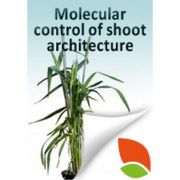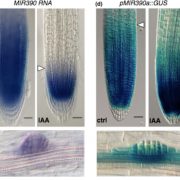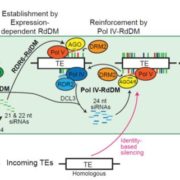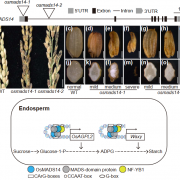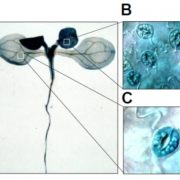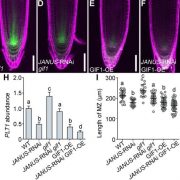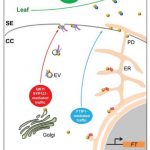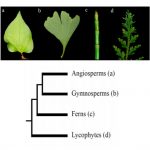Nuclear-cytoplasmic partitioning of ARF proteins controls auxin responses ($) (Mol Cell)
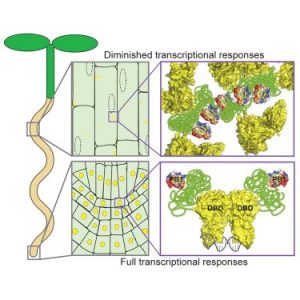 ARF (Auxin Response Factor) transcription factor proteins contain three domains: an N-terminal DNA-binding domain, a variable middle region, and a C-terminal PB1 domain. Powers et al. found that ARF7 and ARF19 accumulate as large-order assemblies in the cytoplasmic region of mature root cells, but the cytoplasmic signal disappears in the actively dividing cells. They showed that a mutation in the PB1 domain leads to nuclear instead of cytoplasmic localization and interferes with assembly formation. The authors also identified prion-like domains within the middle region that contribute to protein condensate formation. Disruption of ARF condensate formation results in altered transcription and morphological defects. This study provides a model where ARF nucleo-cytoplasmic partitioning and condensate formation regulate auxin response and maintains morphological features. (Summary by Arif Ashraf) Molecular Cell 10.1016/j.molcel.2019.06.044
ARF (Auxin Response Factor) transcription factor proteins contain three domains: an N-terminal DNA-binding domain, a variable middle region, and a C-terminal PB1 domain. Powers et al. found that ARF7 and ARF19 accumulate as large-order assemblies in the cytoplasmic region of mature root cells, but the cytoplasmic signal disappears in the actively dividing cells. They showed that a mutation in the PB1 domain leads to nuclear instead of cytoplasmic localization and interferes with assembly formation. The authors also identified prion-like domains within the middle region that contribute to protein condensate formation. Disruption of ARF condensate formation results in altered transcription and morphological defects. This study provides a model where ARF nucleo-cytoplasmic partitioning and condensate formation regulate auxin response and maintains morphological features. (Summary by Arif Ashraf) Molecular Cell 10.1016/j.molcel.2019.06.044


